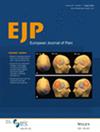A Multidimensional Regression Model for Predicting Recurrence in Chronic Low Back Pain
Abstract
Background
Recurrence is common in chronic low back pain (CLBP). However, predicting the recurrence risk remains a challenge. The aim is to develop and validate a machine learning tool to predict the recurrence risk in patients with CLBP by using multidimensional medical information.
Methods
This prospective cohort study consecutively enrolled 341 patients with CLBP from two hospitals between 1 January 2021 and 31 December 2021. Patients from both centres were used for model development and internal validation, employing multivariate logistic regression (MRL) along with three additional machine learning algorithms. The multidimensional model (MDM) was used to predict recurrence in the next 2 years and was compared with the widely used prognostic tool, the STarT BACK Tool (SBT). The models' performance in detecting recurrence was evaluated using several metrics, including the area under the receiver operating characteristic curve (AUC), decision curve analysis, accuracy, sensitivity and specificity.
Results
A total of 131 patients (38.42%) experienced recurrence. In the MRL model, factors linked to recurrence odds included progressive lower limb weakness, anxiety, mechanical pressure test, number of previous episodes, Oswestry disability index and multifidus proton density fat fraction. For recurrence prediction, the MRL-MDM achieved an AUC of 0.813 (95% CI, 0.765–0.862), sensitivity of 85.2% and specificity of 70.2% in internal validation. In comparison, the SBT for recurrence had an AUC of 0.555 (95% CI, 0.518–0.592), sensitivity of 93.3% and specificity of 17.6%.
Conclusion
The MDM may predict recurrence in patients with CLBP over a 2-year period, surpassing the performance of SBT.
Significance Statement
This study found that the STarT BACK tool is suboptimal in predicting the 2-year recurrence of chronic low back pain (CLBP). Our proposed multidimensional machine learning model aids clinicians in identifying patients at high risk for future recurrence of CLBP and in implementing appropriate preventive measures. Given the considerable healthcare resource utilisation associated with the frequent recurrence of CLBP, our novel model provides significant assistance in addressing this issue, demonstrating substantial clinical relevance.

 求助内容:
求助内容: 应助结果提醒方式:
应助结果提醒方式:


